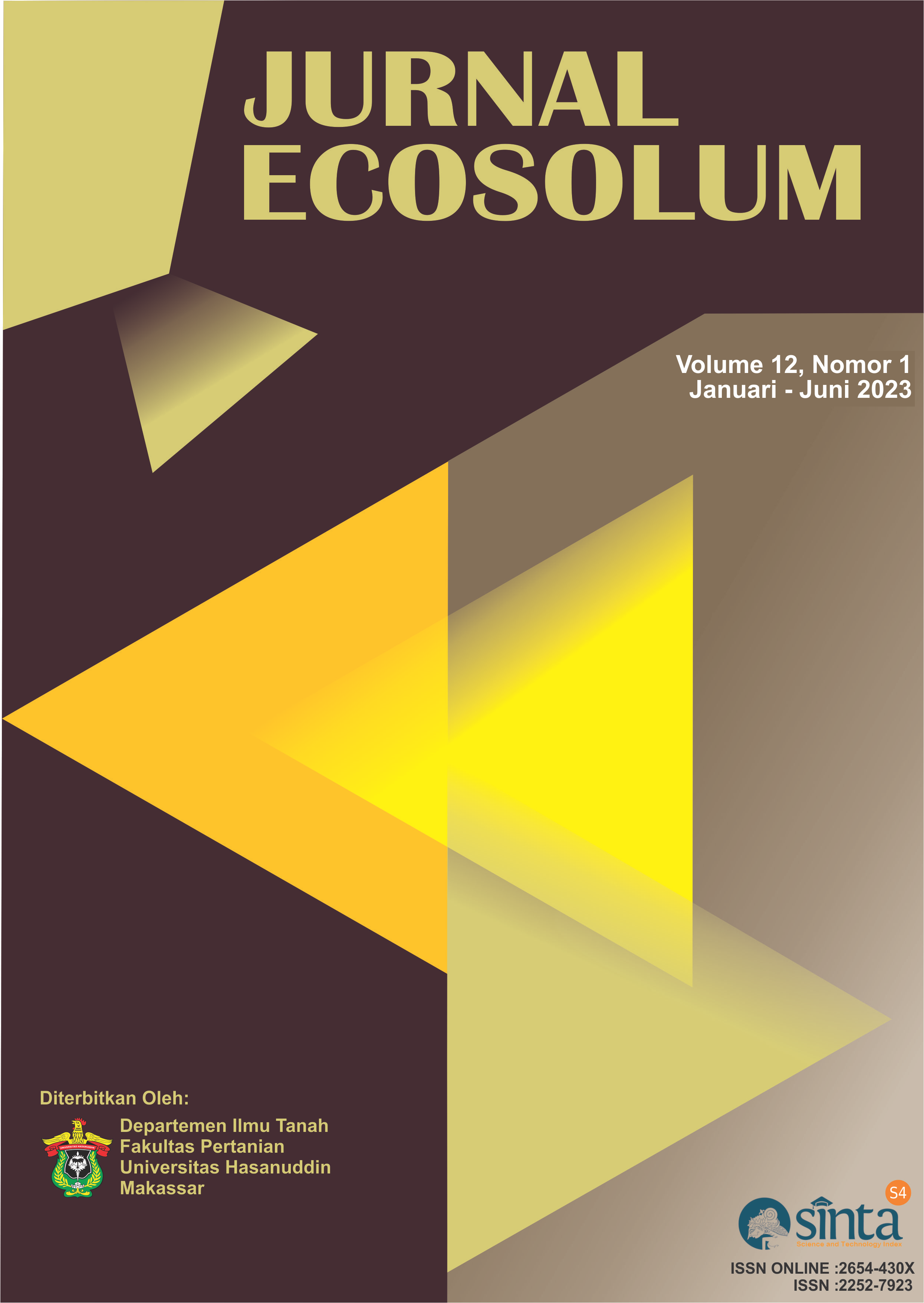Efektivitas Pupuk Organik Cair Bawang Merah dan Limbah Bawang Merah Terhadap Perubahan Sifat Kimia Tanah dan Pertumbuhan Bawang Merah
Effectiveness of Red Onion Liquid Organic Fertilizer and Red Onion Waste on Changes in Soil Chemical Properties and Red Onion Growth
DOI:
https://doi.org/10.20956/ecosolum.v12i1.26545Keywords:
Fertilizers, randomized block design, soilAbstract
Soil has an important role "in agriculture for the growth and production" of plants. The combination of organic and inorganic fertilizers can increase crop productivity and improve soil quality on land so that it can be used sustainably. One of the potential plants that can be used as a basic ingredient of organic fertilizer is red onion. This study aims to determine the effect of red onion liquid organic fertilizer on changes in soil chemical properties and plant growth. This research was conducted using a factorial randomized block design (RBD) with 2 factors. The first factor is the dose of organic fertilizer and the second factor is the dose of inorganic fertilizer. Parameters observed were pH, C-Organic, N, P, K, tuber weight, plant fresh weight, number of leaves and plant height. The results showed that red onion organic fertilizer can lower soil pH and increase soil C-Organic, N, P and K. The combination of the D1KB2 treatment (50% basic fertilizer + 15,000 ppm red onion waste) gave the best results in increasing soil organic C, Phosphate and Potassium. Conclusion. The interaction of inorganic fertilizers and red onion liquid organic fertilizer had a significant effect on tuber weight and plant wet weight, and had no significant effect on plant height and number of leaves.
Downloads
Published
How to Cite
Issue
Section
License

This work is licensed under a Creative Commons Attribution-NonCommercial 4.0 International License.












